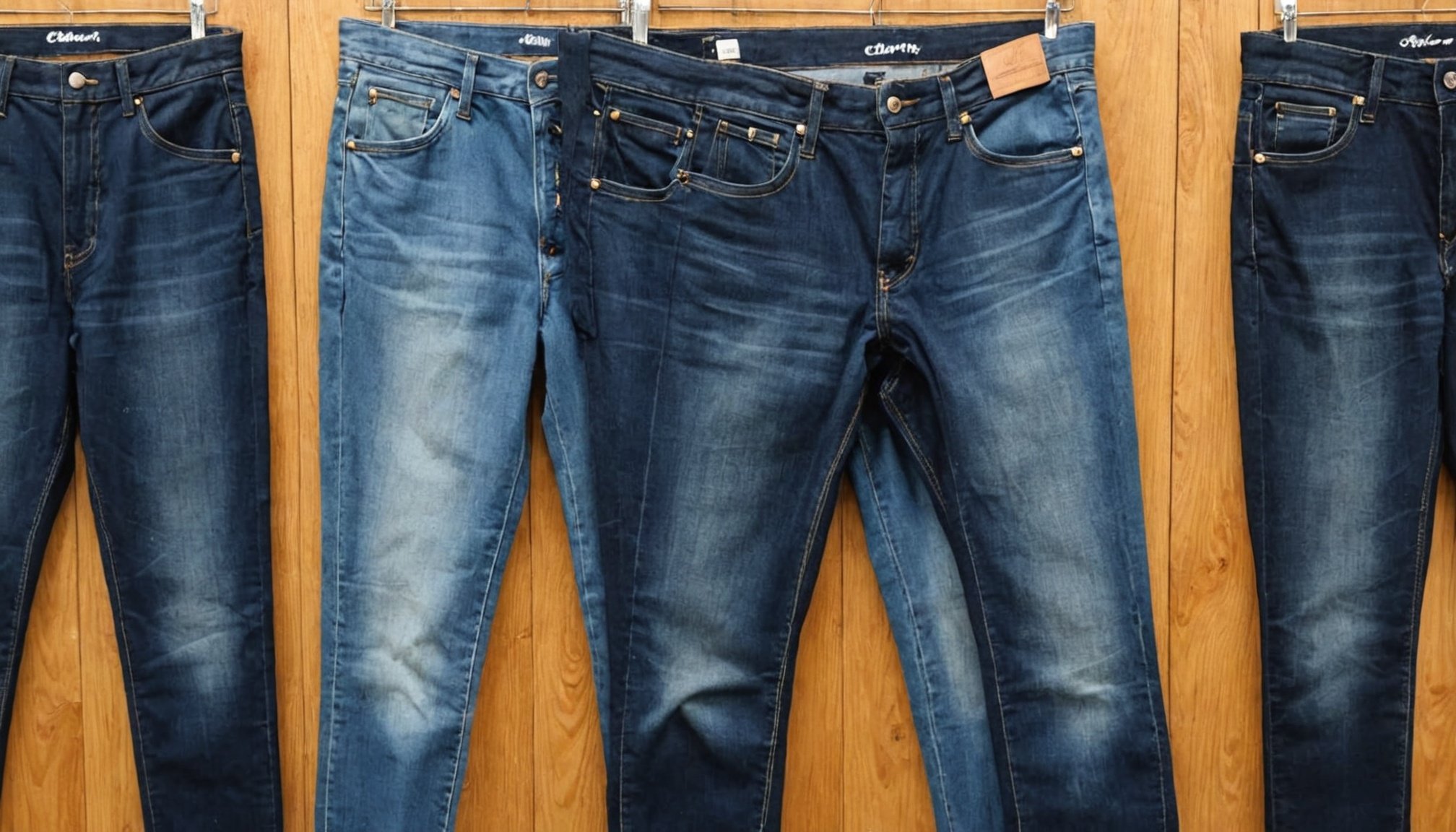Understanding DIY Denim Bleaching
Delving into the world of DIY denim bleaching can be an exciting exploration of creativity and style. The process is a popular trend in DIY fashion, allowing individuals to personalize their denim garments and introduce unique aesthetics. However, before embarking on this adventure, it is essential to gain insights into the properties of the fabric to prevent any costly mishaps. Denim has its own characteristics, and understanding them is crucial for anyone aiming for successful bleaching outcomes.
A common misconception is that any fabric technique can be applied universally across all pieces of denim. This is not the case, as different denim types may react distinctively to the bleaching process. For instance, some denim fabrics might lighten too much or become structurally weakened if not handled correctly. Therefore, understanding how the fabric absorbs and responds to bleach should be a precursor to starting any project.
Also to discover : Unlock the Secrets to Building a Weather-Ready Capsule Wardrobe Perfect for UK Climates;235Top Vegan Beauty Brands in the UK: Unveiling the Finest Cruelty-Free Options
Moreover, it’s worth noting that while some may envision a straightforward procedure, denim care involves more than just applying bleach. The technique’s application, timing, and concentration must be tailored to the denim’s content. These factors play significant roles in achieving the desired visual effect without damaging the fabric.
Safety Precautions for DIY Denim Bleaching
When engaging in DIY denim bleaching, prioritising safety is paramount. Essential safety tips start with using proper protective equipment. This includes wearing gloves to protect your hands from harsh chemicals and goggles to shield your eyes from splashes. A mask is also advisable to prevent inhalation of fumes.
This might interest you : Discover must-have handbags perfect for any event
Creating a secure workspace is crucial. Ensure the area is well-ventilated, allowing fresh air to dissipate any chemical fumes effectively. Adequate ventilation minimises the risk of inhaling potentially harmful substances, enhancing personal protection. Working outdoors or in a space with open windows is ideal.
Responsible handling of bleaching agents cannot be overstated. Always follow manufacturer instructions on the packaging and measure accurately to avoid overuse. Spills should be cleaned immediately, using a neutralising agent if recommended. The disposal of chemical waste should adhere to local regulations to prevent environmental harm.
For added safety, store all materials out of the reach of children and pets. Keeping the workspace organised further reduces the risk of accidents, making the cleaning process swift and efficient. These practices ensure a safe, secure environment for any creative DIY denim bleaching project.
Necessary Materials for Bleaching Denim
Exploring the world of DIY denim bleaching requires some essential bleaching supplies. Ensuring you have the right materials beforehand can greatly influence the outcome and overall experience.
List of Essential Supplies
- Bleach: Choose a high-quality bleach suitable for fabric use; this is the core component.
- Spray bottle or sponge: Tools like these are ideal for applying bleach with precision and control.
- Protective gear: Gloves and a mask should be standard to safeguard against chemical exposure.
- Reacting agent: Materials like vinegar or a neutralising solution to properly rinse the bleach.
- Old towels or newspapers: These can be used to protect the workspace and absorb minor spills.
Recommended Brands and Products
Selecting reliable brands can also make a marked difference. For instance, Domestos and Clorox offer trusted bleach products, while reliable protective gear can be sourced from brands like Ansell.
Local UK Stores for Sourcing Supplies
Sourcing your DIY materials locally ensures that you have a touch-and-feel experience, which can be quite helpful. Consider visiting popular UK establishments such as B&Q, The Range, or online retailers like Amazon UK for a comprehensive range of supplies. Checking their stock before visiting can save both time and effort.
Step-by-Step DIY Denim Bleaching Techniques
Engaging in DIY denim bleaching requires an understanding of various bleaching methods to ensure successful outcomes. Each technique offers distinct styles and results. It is essential to follow a structured step-by-step guide tailored to each method. Here’s how to get started:
Before beginning, gather your essential materials, including bleach, water, protective gear, and test fabric swatches for practice. Fabric care is vital to avoid unexpected results.
Popular Bleaching Methods
-
Spray Technique: Mix equal parts of bleach and water in a spray bottle. Lightly spritz the areas you wish to bleach. This method creates a subtle, uneven fade. Allow to sit for 5-10 minutes, then rinse.
-
Dip-Dye Technique: Combine bleach and water in a container. Dip the section of denim you want to bleach and leave for up to 20 minutes, checking frequently. Rinse thoroughly with a neutralising agent.
-
Sponge Method: Apply a controlled amount of bleach onto a sponge and dab on specific areas, ideal for concentrated patterns. Watch closely to prevent over-bleaching.
Always test on a small area first to anticipate how the denim will react. This careful fabric care approach ensures you achieve the desired style while maintaining the fabric’s integrity.
Effect of Bleaching on Denim Fabrics
Bleaching denim is a fascinating transformation process, yet understanding its impact on various denim types is vital to achieving desired results. Different fabrics may react uniquely to bleaching, causing distinct changes in texture and colour.
Denim types often respond distinctively due to fibre composition and weave. For instance, cotton denim is generally more absorbent, resulting in more significant lightening, while polyester blends might resist bleach, limiting the bleaching outcomes. Knitted denim, often softer, could become more fragile post-bleaching.
Expect noticeable texture changes as bleaching alters the fabric structure. Some denims may soften, while others stiffen or even weaken. Maintaining fabric integrity is essential; it’s advisable to keep bleaching duration short and use a neutralising agent to prevent fibre damage.
Colour outcomes vary widely. A dark indigo might turn light blue, while black jeans could reveal an orange or rust shade. These transformations provide unique styles but require testing on a small section first to ensure satisfaction with the bleaching outcomes.
To preserve fabric integrity after bleaching, wash denim in cold water with mild detergent, and avoid excessive friction or agitation. This care will help retain the new look while extending the garment’s life.
Environmental Considerations of Denim Bleaching
When engaging in DIY denim bleaching, understanding the environmental impact is crucial. Traditional bleaching agents can significantly affect nature due to chemical runoff and water usage. To mitigate these effects, adopting eco-friendly practices can make a meaningful difference.
Exploring sustainable alternatives is a wise choice for environmentally-conscious individuals. For instance, consider using oxygen-based bleach products, which are less harsh and more biodegradable than chlorine bleach. These alternatives not only reduce harm but also preserve the integrity of the denim.
Water conservation is another vital aspect of eco-friendly denim bleaching. Implement simple strategies such as limiting rinse cycles and using minimal water for dilution. Every effort counts towards a sustainable practice that benefits both your project and the environment.
Proper disposal methods are essential for anyone engaged in bleach use. Never pour bleach directly into drains or bodies of water. Instead, follow local hazardous waste guidelines for safe disposal and consider neutralising leftover bleach with vinegar before discarding.
Integrating these environmentally friendly strategies not only contributes to global sustainability efforts but enhances your DIY experience, ensuring that your creative projects align with responsible practices.
Troubleshooting Common Bleaching Issues
Delving into DIY bleaching projects can often present unexpected challenges. However, identifying common problems and deploying effective solutions can ease the process. Here’s how you can address frequent troubleshooting scenarios.
A prevalent issue is uneven bleaching results. This often arises from inadequate bleaching agent application. To remedy this, ensure consistent solution application and dampen the fabric uniformly. Another possibility is over-bleaching, where the fabric weakens or disintegrates. Immediate rinsing with a neutralising solution can mitigate further damage.
Fabrics may exhibit undesirable colour shifts, such as unexpected orange hues from indigo denim. Pre-testing bleach on a small fabric sample can prevent this surprise. If colour correction is needed, consider using a subtle dye to balance hues post-bleach.
Occasionally, bleach may leave a lingering chemical odour. Washing the denim with a gentle fabric softener or airing it out in a sunny, ventilated space can help deodorise.
Lastly, accidental spills or stains during the process are common mishaps, often rectified by quickly applying water and neutralising the area. Implementing these DIY solutions keeps your task on track and ensures optimal results.
Visual Aids and Resources
Embarking on a DIY denim bleaching journey can be made easier with the right support resources. Not only do these aids offer step-by-step guidance, but they provide visual clarity on executing fabric techniques.
Recommended Videos on Denim Bleaching
Visual guides are invaluable. Numerous platforms offer instructional videos that demonstrate denim bleaching techniques in detail. These videos break down complex processes into manageable steps, making them accessible to beginners and experienced enthusiasts alike.
Visual Examples of Techniques
Understanding different bleaching methods is vital, and seeing examples firsthand can clarify results. Visual aids showcasing before-and-after images help you anticipate outcomes and refine your approach, ensuring that your creative vision is realised.
Online Communities for DIY Enthusiasts
Joining online communities can significantly enhance your DIY experience. Forums and social media groups dedicated to DIY fashion are treasure troves of knowledge. Members often share experiences, offer troubleshooting advice, and inspire with their projects. Engaging with these communities fosters a supportive environment where you can exchange tips and stay updated on fashion trends.











